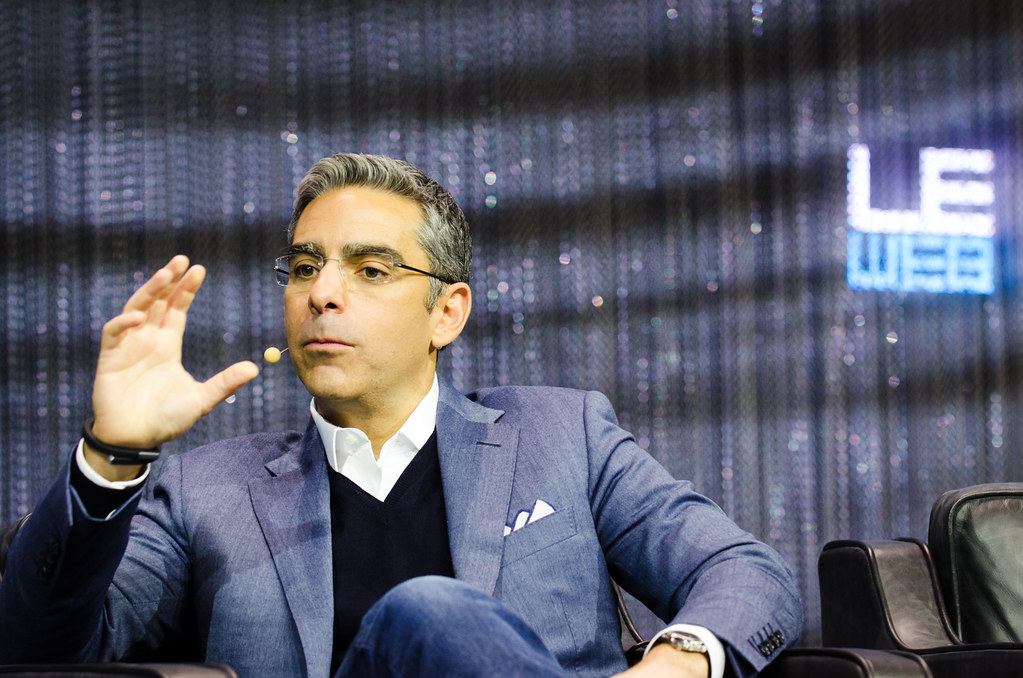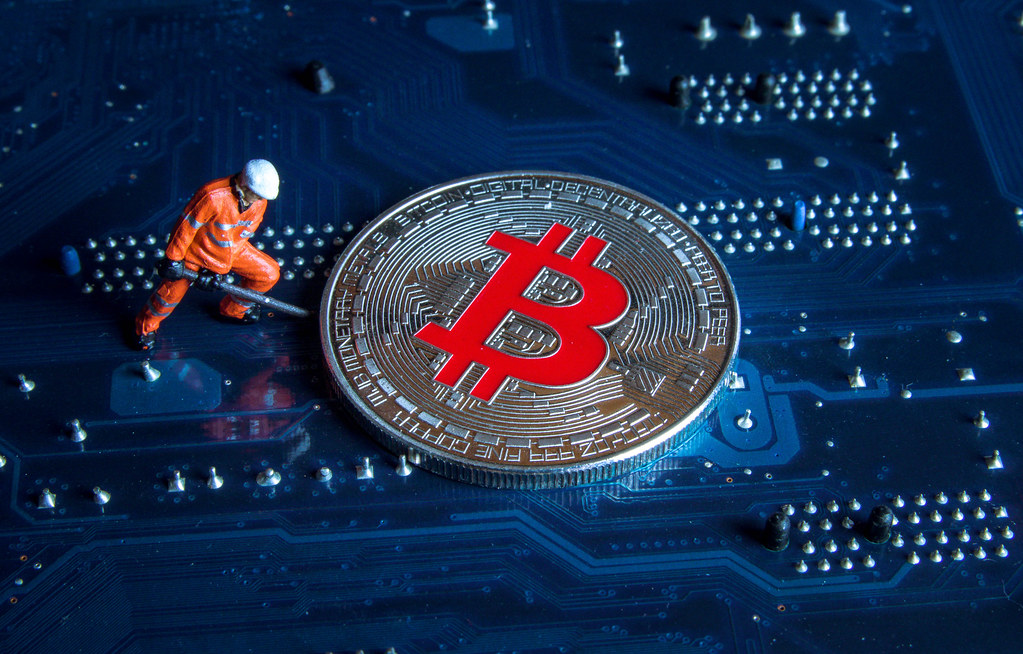Everything around Bitcoin is growing – and occasional double-digit losses on the markets do not change that. Currently struggling above $10 000 dollars, Bitcoin has tumbled downward while other leading altcoins have plummeted even heavier over the weekend. But in the world of crypto, such movements are but a tiny sequence in a much larger choreography of growth – and more and more people are joining the dance.
As the interest in Bitcoin grows, so does the mining power and power consumption giving the network its safety. Too many cooks may spoil the broth, but in Bitcoin’s case decentralisation is the recipe for success.
This week we will deal with several news related to the power-consuming and power-providing Bitcoin mining, including a curious case where a 1960s Moon landing computer was reconfigured to mine bitcoins. Furthermore, Facebook’s recent reassurances about Libra as well as John McAfee’s generous proposal to Cuba. Don’t worry, this time it has nothing to do with his penis.
We also have self-promoting news with significance for the whole sector – Prasos Ltd, the company behind Coinmotion, has been granted a Payment Institution Licence by the Finnish Financial Supervisory Authority. As regulatory challenges have plagued cryptocurrency operators in Europe and elsewhere, this licence is an important turning point in integrating cryptocurrency services with the wider financial world.

Bitcoin consumes much, but not too much
Bitcoin’s energy consumption is a hot topic. If and when the cryptocurrency and related finance technology become more common, the amount of energy used for mining is likely to grow as well. However, earlier estimates about how much energy the network would use were inaccurate if not impossible.
Now the University of Cambridge has published what is probably the best and most accurate way to measure the Bitcoin network’s power consumption. The Cambridge Bitcoin Electricity Consumption Index, or CBECI, provides real-time data on how much electricity the Bitcoin network consumes.
The researchers using CBECI collected data on how much energy mining equipment consumed and used this and the network’s computing capacity to calculate the total amount of Bitcoin miners. According to Cambridge, the Bitcoin network uses approximately 53 terawatt hours annually.
For comparison, the researchers pointed out that in the United States alone unused household devices consume four times more energy than the whole Bitcoin network. If even a fourth of Americans would turn off their devices when not using them, the energy would suffice for the entire current Bitcoin network.

Prasos receives Payment Institution Licence
Prasos Ltd, leading cryptocurrency broker in the Nordics, has been granted an official Payment Institution Licence by the Finnish Financial Supervisory Authority, making it the third cryptocurrency operator in Europe to receive this licence.
Due to the Licence, Prasos can now provide additional features and payment services in its main service Coinmotion. The license also improves the basis for cooperation with traditional financial operators such as banks.
“The process for acquiring the licence has lasted almost 1,5 years, during which legislation on the EU level has become clearer. We have been developing our business and processes strongly. I am very happy that we have reached this point and received the Payment Institution Licence”, comments Heidi Hurskainen, CEO of Prasos.

Facebook assures Libra is safe for users
Facebook’s upcoming cryptocurrency Libra has caused worldwide concern among legislators, politicans and other parties. Facebook has earned earlier distrust due to its reckless policies in managing user information. With the new cryptocurrency, Facebook could in theory monitor its users’ money traffic and behavior in even more detail than before.
Facebook has now given a statement to U.S. senators. According to Facebook’s blockchain chief David Marcus, Libra does not enable access to the economic data of its users.
“I want to give you my personal assurance that we are committed to taking the time to do this right,” Marcus states in a letter to the senators.
According to Marcus, using Libra is “pseudonymous” similar to Bitcoin and other cryptocurrencies, meaning the public blockchain does not enable connecting users directly to wallets. Marcus also assured that Libra would be based on open code.
Facebook has earlier informed that Libra will be left unpublished at least in India, citing political and judicial problems.

John McAfee offers to create cryptocurrency for Cuba
John McAfee, a 73-year-old data security expert infamous for having promised to eat his own penis earlier, has made a new proposal. This time he has promised to create a cryptocurrency for the government of Cuba – and he will do it for free.
“It would be trivial to get around the U.S. government’s embargo through the use of a clever system of currency. So I made a formal offer on a private channel through Twitter,” McAfee writes.
According to McAfee, he could easily create a cryptocurrency designed specifically for Cuba’s economic and societal situation. Known for his grandiose gestures, McAfee claims the world only has about ten people capable of such a stunt, and he is one of them.
McAfee, who is currently evading American tax authorities, made his announcement shortly after Cuban officials informed they were going to create an own cryptocurrency to bypass economic sanctions set by the United States.

Bitcoin mining difficulty rises more than in over a year
According to data by BTC.com, the difficulty of Bitcoin mining has jumped more than in over a year. Last Tuesday the difficulty level rose by approximately 14,23%, reporting its highest two-week increase since 2018.
Mining difficulty refers to how hard it is to compete for mining rewards in the Bitcoin network. The difficulty level is automatically adjusted every two weeks (or 2016 blocks) based on the network’s mining capacity.
The competition among participants in the Bitcoin network’s mining has seen significant increases. This indicates that at least miners have faith in bitcoin’s continued course rise. A growing mining capacity also strengthens the Bitcoin network, making it safer against attackers.
BTC.com estimates that both mining capacity and difficulty will continue to rise. The difficulty level will again be adjusted within the next two weeks and may reach new records if the competition keeps accelerating.

Moon landing computer used to mine bitcoins
The American software engineer Ken Shirrif has managed to reconfigure the only remaining computer used in Moon landings to mine bitcoins. The computer was used in the Apollo Moon missions, including the very first Moon landing in 1969. The computer is the last remaining guidance computer left from the Apollo missions.
“Implementing the Bitcoin hash algorithm in assembly code on this 15-bit computer was challenging, but I got it to work. Unfortunately, the computer is so slow that it would take about a billion times the age of the universe to successfully mine a Bitcoin block”, Shirriff told the British ITPro.
The idea may not be on a sound economic basis, but symbolically it’s an important reminder of how far humanity has reached. Already calculators from the 80s had more computation capacity than what was needed for the Moon missions and modern smartphones have several magnitudes more.



